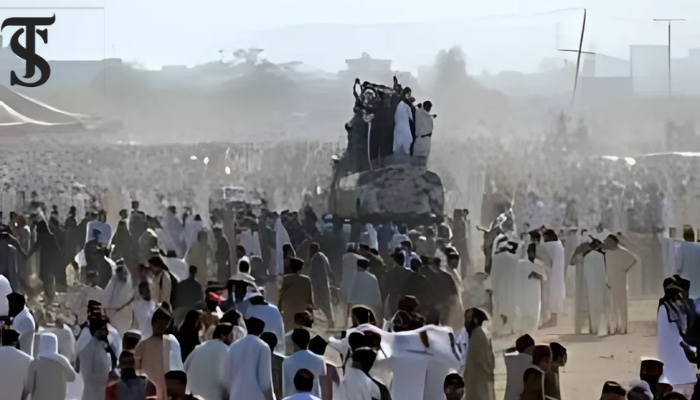Pakistan’s Population Explosion Amid Economic Crisis: An Irony

The population in Pakistan has surged notably, particularly during the ongoing financial crisis, presenting a rather surprising and, in some respects, ironic situation amid numerous contradictions. Despite severe financial pressures, Pakistan’s population explosion is exacerbating swiftyly. One might argue that this demographic increase reflects a hopeful spirit, as more lives are brought into a country grappling with its existing population. This growth, occurring in the midst of economic instability, reveals an almost paradoxical resilience or social drive that is not solely found within economic metrics.
Population Explosion Amid Economic Strain
The rapid population growth in Pakistan, which now ranks as the fifth most populous country with approximately 240 million citizens, seems paradoxical given the country’s lagging economic performance and other development indicators. The situation presents a complex irony: the rising population, rather than being a boon, exacerbates economic difficulties. High birth rates contribute to a growing unemployment rate, strain overburdened welfare services, and intensify competition for scarce resources.
Economic and Social Implications
The paradox becomes evident when considering Pakistan’s struggle with various indicators of human development. The education system and healthcare services are inadequately funded, while outdated infrastructure needs modernization. Instead of harnessing the potential of its youthful labor force, Pakistan finds itself mired in debt and economic instability. Efforts by governing bodies to address these challenges often falter in the face of escalating population pressures.The high birth rates further recreate the poverty cycle, with big families that are struggling to provide for the basic needs.
Moreover, the environmental effects due to the continued unchecked population explosion is an irony as the added layer. Poor environmental condition is already a major challenge in Pakistan, namely water borned problems, the air is polluted and the brunt of climate change is exacerbating with each passing second. The increase of the population is the major cause of the depletion of natural resources, results in the change from the land of the pure to the land of the constraints, yearning for resources.
For the most part, the rise in the Pakistan’s population amidst its economic crisis stands out as an ironic exposition of the intricacy of our social dynamics . The surge in population often parallels or even galvinises the existing pearls, exponentially thus creating a vicious cycle that is almost impossible to break. The irony of it is worn off through the contradiction between a great number of young and healthy people, forming the backbone of tomorrow, and the economy lags behind due to insufficient financial resources. This is a stark reminder that tackling socio-economic challenges: grim reality not mere numbers which needs to be planned for the present and future together.
In 2024, Pakistan’s population is over 240 million, making it the fifth most populous country in the world. The population explosion with the moulty rate of 2.0% annually is accompanied by serious economic problems experienced in the country. The demographic profile of the country is young, with a median age of 23, and a large part of the population being less than 25. According to the Economic Survey of Pakistan the child-bearing among females is the main reason for a sharp population increase. Moreover, over 36.4% of the people are living in cities, with important cities such as Karachi and Lahore being affected by the large population. In spite of the demographic dividend potential, Pakistan is plagued with numerous social and economic issues.
Key Statustics
- GDP: Around $376 billion USD, with a per capita income of about $1.600 USD.
2. 2Poverty: At least 24.3% of the people are below the national poverty line.
3. Unemployment: In the range of 6.1%, a significant proportion of the workforce is in the informal sector.
4. Literacy Rate: 59.13%, but gender differences are to be observed (70.2% for males and 48.5% for females).
5. Healthcare Access: The average lifespan of the individual is 67.5 years, infant mortality rate is 55.7 per 6.1,000 live births, and maternal mortality rate is 140 per 100,000 live births.
Conclusion
Pakistan is experiencing an increase in its population while facing economic hardships that compress social, demographic, and religious factors. Solving these issues requires the country to maintain an equilibrium between religious and realistic practices to ensure the prosperity of the nation and its population. By incorporating a comprehensive approach that employs improvements in education, health care, and the economy into national policies, Pakistan can achieve a balanced and prosperous future.

Dr. Fatima Aslam
The author is a pharmacist with keen interests in politics and society.






One Comment